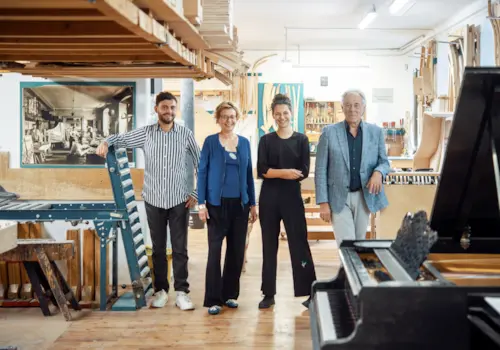RCM student Alec Coles-Aldridge explores the surviving pianos of the Nagasaki and Hiroshima atomic bombs in 1945: The hibaku pianos.
Hibakusha is a Japanese word applied to the survivors of the atomic bombs dropped on Nagasaki and Hiroshima in 1945. Hibaku pianos are likewise surviving pianos from the blasts that killed over 150,000 people, flattened two cities and introduced the world into a new age of nuclear threat. One of these pianos, owned by the piano tuner Mitsunori Yagawa, was featured in the Nobel Peace Prize Award Ceremony in 2017. Yagawa considered that, “by having the world hear the sound unchanged from 72 years ago, it will make them consider nuclear issues with more familiarity”.
The Story Of The Hibaku Piano
The story of this particular hibaku piano began in 1938 when it was built by Yamaha. The piano found a home in Hiroshima. On the 6th August 1945 at 08:15, the atomic bomb “Little Boy” was dropped from the aircraft Enola Gay and detonated 44 seconds later. Located three kilometres from the centre of the detonation, the piano miraculously survived, although shards of glass hit both ends of the piano. The piano found its way to Yagawa, and since then he has given over one hundred recitals featuring the piano. Alongside the Nobel Peace Prize Award Ceremony, Yagawa has performed at the Phoenix Tree Peace Concert, the Nagasaki Peace Music Festival and a concert in New York in 2010. The concert in New York was dedicated to those who lost their lives in 9/11, the hibaku piano being seen as an instrument whose past experience could allow it to respectfully create music for the unfortunate victims.
You can watch the hibaku's appearance at the 2017 Nobel Peace Prize Concert here.
"I feel I have a mission to convey the preciousness of peace through this atomic piano." - Mitsunori Yagawa.
Another hibaku piano, owned by Toshihiko Yoshii, is receiving regular performances too. This piano was built in 1932, also by Yamaha, and was less than two kilometres from the centre of the blast. As a hibakusha himself, Yoshii felt it was his duty to maintain and perform on this hibaku piano. Indeed, whilst studying at Hiroshima University, Yoshii belonged to the music club and upon graduation worked as a jazz pianist in Tokyo. In 2015 Yoshii performed at the Hiroshima Peace Memorial Park.
What The Hibaku Pianos Symbolise
The hibaku pianos are a fragile reminder of the destruction and horror that atomic weapons can unleash. Performing on hibaku pianos is not a criticism of General Thomas Handy’s decision to authorise the dropping of the first atomic bomb, or of the pilots that delivered the bombs to their targets, for they faced decisions that had no easy answers. The hibaku pianos remember, through music, those who died, and act as a reminder of the power that human weapons now hold.
By Alec Coles-Aldridge. Alec is a student at the Royal College of Music studying for a Bachelor of Music Degree.







-37752.jpg?&width=925&height=585&bgcolor=ffffff&mode=crop&format=webp&webp.quality=75&scale=both)